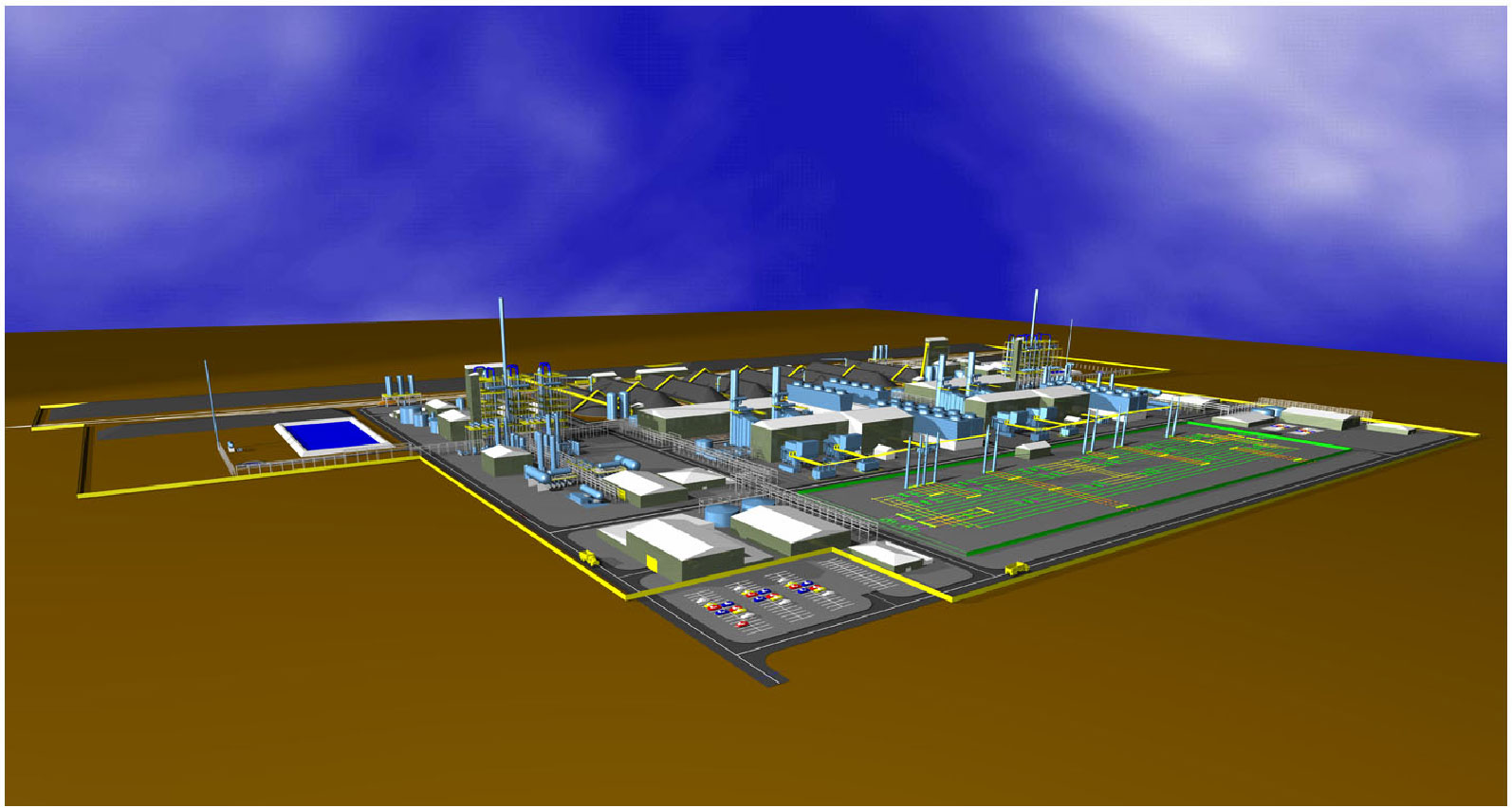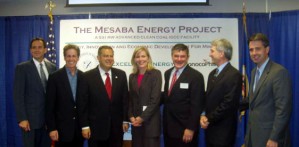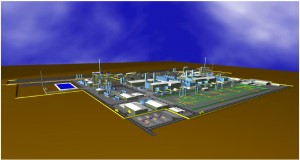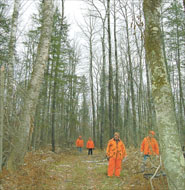Mesaba is baaaaaack!
June 11th, 2012
Excelsior Energy’s Mesaba Project has raised its ugly head again. There were rumors for a long time that Micheletti wanted to change it to a natural gas plant. Then they went to the legislature and got the “incentives” for their boondoggle “clean coal” plant, the “innovative technology” that doesn’t work… they went to the MPCA and their air permit was AGAIN rejected as incomplete, and now they’ve gone to the PUC, requesting confirmation that the permits they have are valid. Oh, PUH-LEEZE!
Here we go again…
mncoalgasplant.com will be filing comments, no doubt about it!
Would the PUC doesn’t transfer projects like this without amending the permit application, without verification of what indeed it is they want to do? If you take the original ALJ Decision, the Permit Order and the Permit itself, redact everything related to coal gasification, what’s left? Not much! We need to know what they’re planning (if anything, this remains the vaporware project from hell).
This is the letter filed by Excelsior Energy — I don’t recall having received it, but will dig through the piles here, they DO have my correct address (though I note that they sent to Excelsior’s Evans, Greenman and Harrington at their OLD address!):
Here is the PUC’s Notice of Comment Period, first round due June 29, 2012:
And what’s most disturbing is the legislative change in 2011, supported, DEMANDED, by Gov. Dayton:
Subd. 3. Staging and permitting.
(a) A natural gas-fired plant that is located on one site designated as an innovative energy project site under subdivision 1, clause (3), is accorded the regulatory incentives granted to an innovative energy project under subdivision 2, clauses (1) to (3), and may exercise the authorities therein.
(b) Following issuance of a final state or federal environmental impact statement for an innovative energy project that was a subject of contested case proceedings before an administrative law judge:
(1) site and route permits and water appropriation approvals for an innovative energy project must also be deemed valid for a plant meeting the requirements of paragraph (a) and shall remain valid until the earlier of (i) four years from the date the final required state or federal preconstruction permit is issued or (ii) June 30, 2019; and
(2) no air, water, or other permit issued by a state agency that is necessary for constructing an innovative energy project may be the subject of contested case hearings, notwithstanding Minnesota Rules, parts 7000.1750 to 7000.2200.
Here’s the link to the full Minn. Stat. 216B.1694.
Mesaba Siting Recommendation?!?!?!
December 30th, 2009
WTF?
The ALJ’s recommendation has come out in the Excelsior Energy Mesaba Project docket and he’s recommended that a permit be issued. Really…
This is the judge who tossed out my client, Public Intervenors – Mesaba, Xcel Energy and Minnesota Power because we didn’t file testimony. Show me in the rules where filing testimony is required…
THERE WERE NO PARTIES IN THIS DOCKET, JUST EXCELSIOR ENERGY.
Read it for yourself:
I’m at a loss about what to say…
Let Mesaba go…
December 19th, 2009
Jorgensen’s got to get over it — Mesaba is done, ain’t happening, dead, dead dead, yet she’s spinning those tales and hype about Excelsior Energy’s Mesaba IGCC Project. From the first words in the title, it’s lies, lies and more lies, oh, and misrepresentations and falsehoods and exaggerations and utter bullshit too! Why does the St. Paul Pioneer Press give her space forthis advertising of the nonsensical kind?
Here’s what Citizens Against the Mesaba Projet’s Charlotte Neigh had to say about it:
Julie Jorgensen is using the opportune hook of the Copenhagen conference to repeat Excelsior Energy’s same old, self-serving promotional claims about the “clean coal” technology of its Mesaba Energy Project. One must wonder why the Press unquestioningly allots opinion space to the promoter of a precarious for-profit venture, financed almost exclusively by $40 million in public funds, which have been benefiting the author and her co-founder husband, Tom Micheletti.
What Jorgensen didn’t say:
• The U.N. negotiators in Copenhagen decided to leave carbon capture and storage, the prime objective of the IGCC technology touted by Excelsior Energy, off the list of clean-energy projects eligible for the Clean Development Mechanism; the 12/17/09 Wall Street Journal reported that “clean coal seems to be getting the cold shoulder at the climate summit”, and “. . . clean coal is anything but viable right now”.
• Mesaba’s Unit I would emit 5 million tons of carbon dioxide per year and the Department of Energy has acknowledged that capturing and sequestering the CO2 from the proposed Taconite plant is not feasible.
• The claimed economic benefit has been rejected by the Minnesota Public Utilities Commission, which found the project too expensive and risky and not in the public interest.
• The need for this Project has never been proven; no utility is willing to buy its output; Xcel Energy successfully resisted efforts to force it into a power purchase agreement; and the MPUC has declined to require other utilities in the state to include Mesaba’s output in their resource plans.
• The environmental claims are yet to be adjudicated as the MPUC considers the route and siting permits and other government agencies pursue their concerns related to air, water and waste permits.
Is Jorgensen’s piece really that bad? See for yourself:
Julie Jorgensen: We need baseload power. Coal’s plentiful. Let’s clean it up
By Julie Jorgensen
Updated: 12/17/2009 05:54:25 PM CSTI’m the co-founder of Excelsior Energy, which is developing the Mesaba Energy Project, an IGCC power plant near the town of Taconite on Minnesota’s Iron Range. From my point of view, IGCC offers economic and environmental benefits to Minnesota. The Midwest is poised be a leader in the delivery of this technology. Gov. Tim Pawlenty and the Minnesota Legislature have supported the development of Minnesota’s IGCC plant, the Mesaba Energy Project, since 2003, and the project has been exempted from a statewide prohibition against new coal plants. Eleven Midwest governors established a collective goal to spur construction of at least five commercial-scale IGCC plants by 2015, and President Obama announced a goal to build five such “first-of-a-kind” clean coal plants. The U.S. Department of Energy (DOE) has provided significant funding and incentives to the Mesaba Project to offset the costs of needed innovation.
Adoption of IGCC technology is essential to cleaning up coal and mitigating climate change.
As fears mount about global warming, environmental advocates like the Clean Air Task Force and the Natural Resources Defense Council support the timely and widespread commercialization of IGCC technology. From a global perspective, the importance of commercializing a cleaner way to use coal cannot be understated: both India and China have vast coal reserves, which they will inevitably use in the cheapest and easiest possible ways to fuel their growing economies.
Additionally, the costs of new nuclear facilities may put them out of reach.
Julie Jorgensen is the former CEO of CogenAmerica, a publicly traded independent power company, and a former executive of NRG Energy, a global energy development company. She’s a co-founder of Excelsior Energy Inc., which is developing a coal gasification plant near Taconite on Minnesota’s Iron Range. Her e-mail address is JulieJorgensen@ExcelsiorEnergy.com.
Mesaba EIS? And close encounters of the Mesaba kind!
November 17th, 2009
The joint DOE and MN Dept. of Commerce EIS for Excelsior Energy’s Mesaba Project has been released. WTF? This is SUCH a waste of time. And I am at a lost to explain how it is that this even was released, why we have to bother with it, when it’s the vampire-vaporware project from hell that is dead but … but…
Excelsior Energy Mesaba Project Environmental Impact Statement
Comments on the “adequacy of the Final EIS or its impact upon the issues” are due on December 2, 2009. Send Comments to:
steve.mihalchick [at] oah.state.mn.us
or by mail to:
Steve Mihalchick, ALJ
Office of Administrative Hearings
P.O. Box 64620
St. Paul, MN 55164-0620
Here’s the Order establishing that deadline:
Is this weird language or what:
b. Such comments on the “adequacy” of the Final EIS or its “impact” upon the issues in this matter shall be filed with the Administrative Law Judge within ten business days after filing of the Final EIS.
So get cracking on “such comments” and send them in!
And just in, breaking news…
Just last Friday, a MCGPer and his son were out deer hunting on the preferred Excelsior site, guns in hand, on the alert, and what should come bursting through the trees but… BOB EVANS! Bob Evans and two other Excelsior boys, they were out viewing the site during deer hunting! That just doesn’t seem to bright.
Give it up!!! Get a job, Bob!!!
And have they forgotten that other encounter in the woods, almost exactly three years ago?
Meanwhile … the sun is coming up over New York right now…
Mesaba EIS delayed again
October 27th, 2009
For a project that’s dead, they continue to take vital signs… go figure…
And once again, the EIS, which was pooh-poohed by the EPA and US Army Corps of Engineers as insufficient, has been delayed…
Here’re the EPA and US Army Corps of Engineers objections:
The chart also says the Kemmer IGCC EIS should be out in October. Is it?







